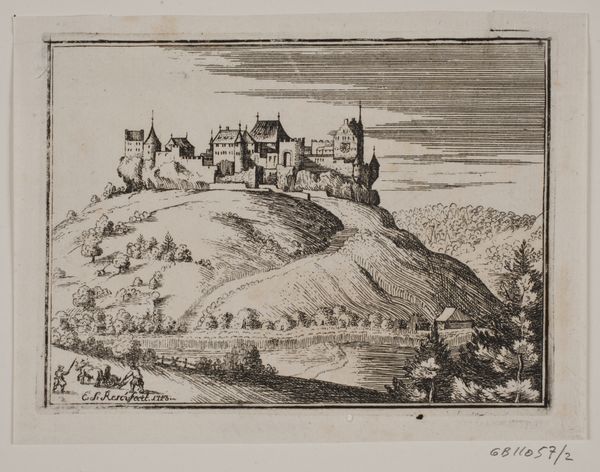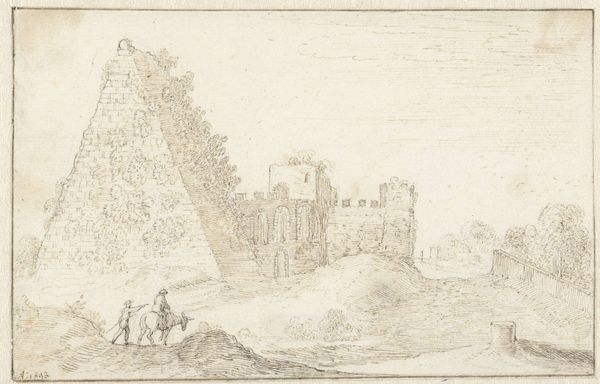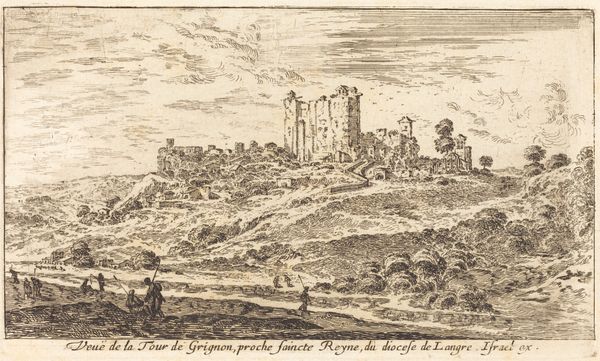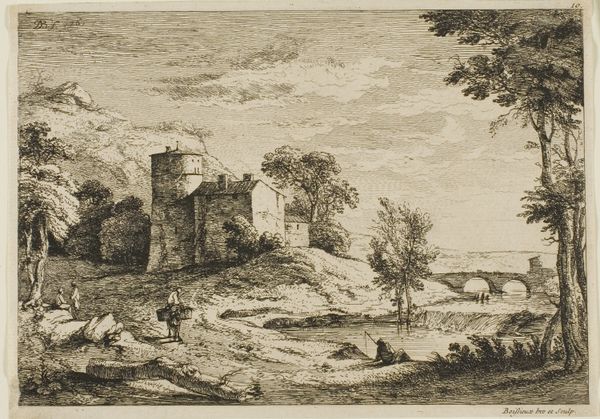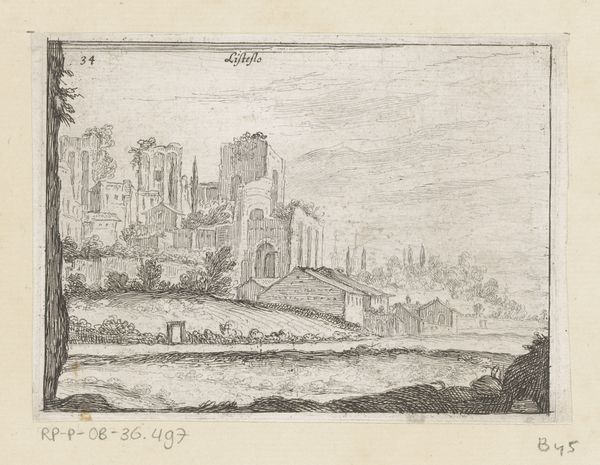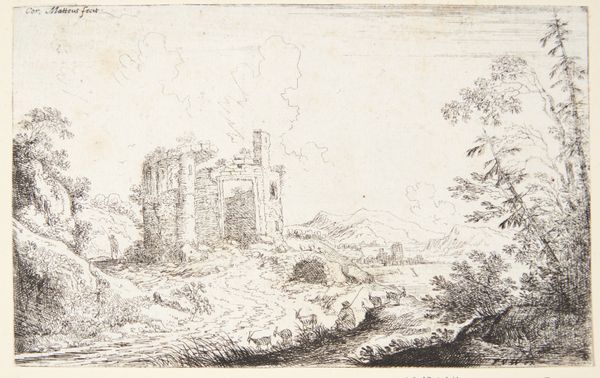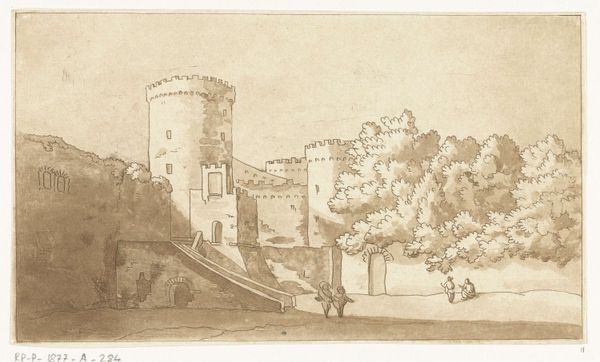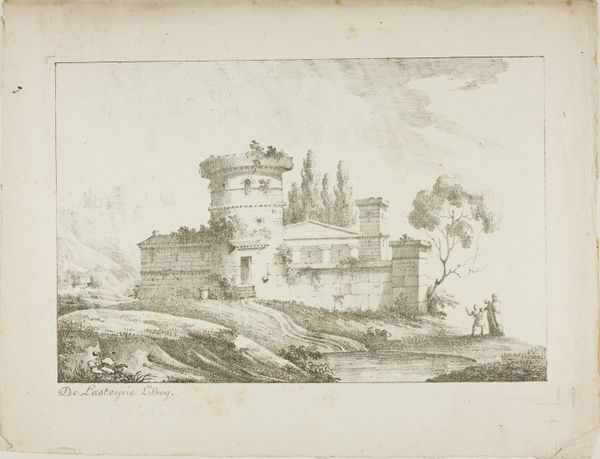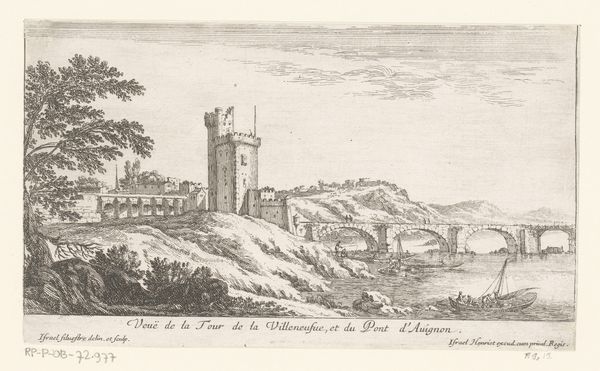
drawing, print, etching, paper
#
drawing
# print
#
etching
#
landscape
#
paper
Dimensions: 108 × 163 mm (image/plate); 155 × 235 mm (sheet)
Copyright: Public Domain
Curator: Here we have a print by John Clerk of Eldin, titled "Borthwick Castle." It’s an etching on paper. Editor: My first impression is of solitude, almost melancholy. The castle seems remote, austere, yet there’s a strange serenity in the landscape despite the heavy stone. Curator: Etchings allow for incredibly fine detail, don’t they? You can really see how he’s used the technique to render the texture of the stone and foliage, almost mimicking the natural processes of erosion and growth. The material of the print itself—paper, ink—becomes almost geological in its own right, archiving the scene. Editor: Precisely. The castle, set high upon that hill, is a potent symbol of power and perhaps even isolation. The three figures in the foreground seem small, dwarfed by its presence. They really underline the idea of human transience against enduring structures. Note how their positioning recalls earlier allegorical prints depicting mortality! Curator: Good point. I also see this from the vantage of labor. How many hands would have been involved in the physical construction of the castle? The quarrying, the transport of materials, the craftsmanship... That stands in contrast to the singular artistic labor involved in creating this etching. A mass effort condensed into a singular vision, a printed image reproduced for wider circulation. Editor: And there's the very direct contrast between those silhouetted figures below who presumably, like us, simply gaze on that feat of construction! I’d argue, too, that the castle itself carries symbolic weight as a defense mechanism and speaks volumes about territorial control in bygone days. But the romantic landscape hints also at a culture seeking refuge in nostalgia as these buildings passed from strategic stronghold to heritage site. Curator: Absolutely. The print bridges both architectural engineering and Romantic landscape. It really speaks to how society’s relationship to these buildings has transformed over time through shifts in military and domestic practices. The print served as a new way of preserving that transformation through production for domestic display. Editor: Indeed, and thanks to that process we can now contemplate its multi-layered narrative, both immediate and deeply embedded, right here at the Art Institute of Chicago. Curator: Right, so from raw materials to iconographical reflections – that really shows how much is caught within this etching.
Comments
No comments
Be the first to comment and join the conversation on the ultimate creative platform.
